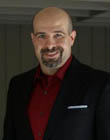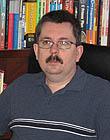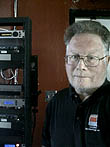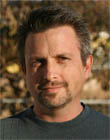|
|
This topic comprises 4 pages: 1 2 3 4
|
|
Author
|
Topic: What is the acceptable tolerance from exactly 24 fps for motion pictures?
|
|
|
|
|
|
|
|
|
|
|
|
|
David Buckley
Jedi Master Film Handler
Posts: 525
From: Oxford, N. Canterbury, New Zealand
Registered: Aug 2004
|
 posted 01-29-2017 05:33 PM
posted 01-29-2017 05:33 PM





Induction motors follow the frequency of the grid, and the grid is kept "close" to the nominal frequency at all times. However, grid frequency does vary a bit. So the grid, short term, isn't actually very stable. But as noted above, because clocks have to be right, the long term grid stability is amazing. The grid is corrected each day to bring clocks back to the right time.
Crystals work the other way up; short term, they are quite stable, but their long term accuracy is poor. One can use the mains to figure out how sharp or flat from it's stated frequency the crystal is.
Tone-wheel Hammond organs are also locked to the mains frequency, and in normal use, folks don't complain about them going out of tune.
| IP: Logged
|
|
|
|
|
|
|
|
|
|
|
|
|
|
|
|
|
|
|
|
All times are Central (GMT -6:00)
|
This topic comprises 4 pages: 1 2 3 4
|
Powered by Infopop Corporation
UBB.classicTM
6.3.1.2
The Film-Tech Forums are designed for various members related to the cinema industry to express their opinions, viewpoints and testimonials on various products, services and events based upon speculation, personal knowledge and factual information through use, therefore all views represented here allow no liability upon the publishers of this web site and the owners of said views assume no liability for any ill will resulting from these postings. The posts made here are for educational as well as entertainment purposes and as such anyone viewing this portion of the website must accept these views as statements of the author of that opinion
and agrees to release the authors from any and all liability.
|

 Home
Home
 Products
Products
 Store
Store
 Forum
Forum
 Warehouse
Warehouse
 Contact Us
Contact Us




 Printer-friendly view of this topic
Printer-friendly view of this topic



















